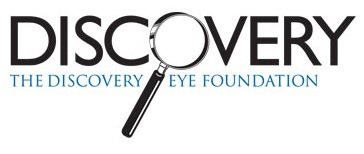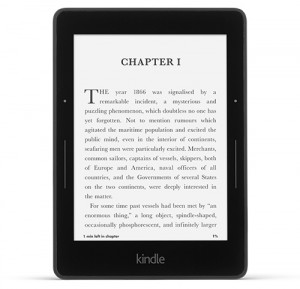E-Readers for Low Vision
11/18/14
While the devices mentioned in the November 13th post will help you read a hardcover or paperback book, what about an e-reader?
E-Readers for Low Vision
These lightweight portable devices come with a variety of options for people with limited vision, at a more moderate cost. The two we will look at are the Kindle and the Nook.
There are two options here, an e-ink reader (the Paperwhite or the new Voyage), the closest to reading a paper page, or a full-color tablet. The only accessibility options for the e-ink readers are the ability to select a font you find easy to read and the ability to increase the font size. The increase in font size is a big help, but remember, that as you increase the size you will be “turning the page” more often – the screen size is 6” diagonally. The Voyage has a whiter background than the Paperwhite allowing for more contrast. Both include a built-in screen light that can be adjusted to your needs. One thing to note is that while it does have a screen light, it is not a backlit display as you will find in the Fire HDX. This might mean less eye strain.
The Fire HDX is a full-color tablet with quite a few more accessibility options and the screen sizes range from 6” to 8.9”. Since it is a full functioning tablet you can access email, play games, watch videos and a variety of other things. It has more large-font options (that can even be used for your emails), a screen magnifier that is easily activated with a triple tap on the screen and you can pinch to adjust the zoom and the backlit display provides high contrast. There are other options for people that are blind including a screen reader to describe actions taken on your screen, five accessibility shortcut gestures to help you navigate and even Braille support with a free app from the Amazon App Store. Because it is a backlit display you may experience eye strain if you don’t occasionally take reading breaks.
Kindle also has a free accessibility plugin that is downloadable for your Windows PC. It provides the following features: text-to-speech reading, voice-guided menu navigation, large font sizes, high contrast reading mode, keyboard navigation and accessible shortcuts. It is compatible with JAWS, NVDA and Microsoft Narrator.
Nook, like Kindle, has two options. An e-reader called the Nook GlowLight and a full-color tablet called the Samsung Galaxy Tab 4 Nook in 7’ and 10.1” sizes. As with the Kindle e-ink reader, the only accessibility options are the font and font size. There is also a built-in light to make the page brighter.
The new full-color tablets now made by Samsung, provide you with the access of a full functioning tablet such as email, playing games, watching videos, etc. The vision accessibility options include screen magnification for the text and pictures, TalkBack which reads aloud menus and on-screen options for navigating the device, negative colors to invert the color of the screen (text that usually appears black on white will be shown white on black), color adjustment if you are color-blind, and a text-to-speech option that will allow you adjust the rate at which text is spoken and your preferred text-to-speech program. Once again, these tablets have backlit screens that may tire your eyes after an extended period of reading, so take breaks.
E-Book Formats
The Kindle and Nook each have their own proprietary book formats, meaning that you can only read a book purchased for the Kindle on a Kindle or a Nook book on a Nook, however EPUB and CBZ formats can be easily transferred to the Nook. This is more important when it comes to borrowing e-books from a library. The EPUB format is more common when e-books are offered; and while some libraries now offer Kindle books, there are more EPUB titles. If you are comfortable with technology, you can use Calibre to convert most formats into whatever format you need.
Choosing between a Kindle and a Nook is based on personal preference. You can try out both devices before you buy them at Best Buy or Staples for the Kindle and at Barnes & Noble stores for the Nook. If you already own an iPad or Android tablet, remember you can also download the free Kindle and Nook apps from the App Store or Google Play.
 Susan DeRemer, CFRE
Susan DeRemer, CFRE
Vice President of Development
Discovery Eye Foundation
For Book Lovers – Low Vision Magnifiers
11/13/14
The first of this month was Book Lover’s Day, and as an avid reader, I am willing to celebrate any day that is about reading. However, if you suffer from low vision due to age-related macular degeneration, cataracts, retinitis pigmentosa or other sight-threatening eye diseases, you may not be able enjoy reading as much as you used to.
There are several options to help you enjoy books again, including low vision magnifiers, e-books and tablets. We will provide you with a quick primer to help you select the best option for your lifestyle and budget. Today we will look at magnifiers and Tuesday we will explore e-readers and tablets.
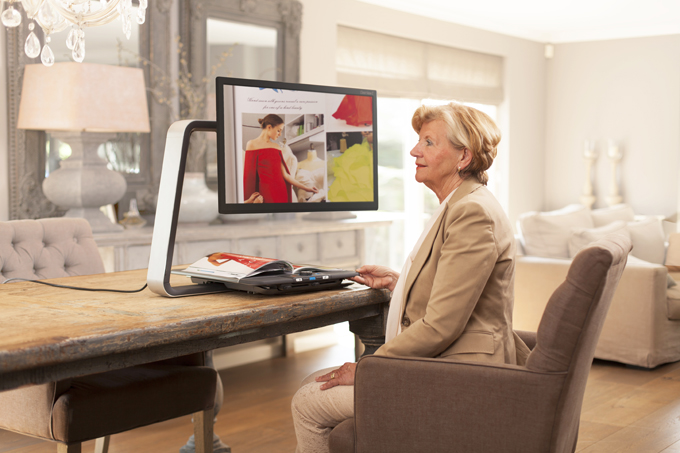
Low Vision Magnifiers
There are several general classifications for magnifiers –
• Hand-held magnifiers – These are smaller and more portable, allowing you to read thins such as menus, price tags, prescription bottles and ingredients in addition to books. Some also come with built-in lighting that can help you see in low light situations. They can be as simple as a single glass lens to more advanced digital devices that can auto-focus, change text color and magnification or even let you snap a picture of what you are reading if steady hands are an issue. However, because of these are small enough to make them portable, the field of vision is small and reading books for any length of time might become tedious.
• Stand magnifiers – These are really better for reading books, magazines and newspapers as the field of vision is larger, your hands will not get tired holding the device and the distance between the page and the magnifier will remain more constant, making reading easier. This is especially important if you have tremors. However, these require sitting at a desk or table to be used.
• Magnifiers mounted on reading glasses – These are great for being “hands-free,” but they also limit your ability to see at varying distances, and are generally used for seeing things less than a foot from your nose.
• Video magnifiers – These devices use a video camera (similar to the portable digital device listed above) that focuses on the page and then magnifies it for viewing on a screen or monitor. Text color/background, brightness, contrast and levels of magnification can be adjusted as needed. As with the stand magnifiers, the ones able to scan an entire page of a book need to be used at a desk or table. However, now there are some machines that will even read out loud to you!
To get an idea of the range of devices available, along with the wide range of prices, here are three websites to get you started – Enhanced Vision, Optelec and Humanware.
Because each person has a different vision issue, not one magnifier works for everyone. A person with central vision loss from age-related macular degeneration will have different needs from a person with peripheral vision loss from glaucoma. That is why we suggest that you consult with a low vision specialist to help guide you in selecting the correct device for your specific needs.
Check back on Tuesday, or subscribe to the DEF blog, to learn about e-reader and tablet options for people with low vision.
 Susan DeRemer, CFRE
Susan DeRemer, CFRE
Vice President of Development
Discovery Eye Foundation
Living With Dry Age-Related Macular Degeneration
11/6/14
Donna Cole gives new meaning to the term lifelong learner. “I love school. I love learning,” says 79-year-old Cole, who still regularly attends classes at the Osher Lifelong Learning Institute at California State University, Long Beach. “It seems like I’ve gone to school all my life. I just love it.”
While she did not earn her college degree until she was 65, Cole excelled at jobs ranging from assistant vice president of a savings and loan association, to president of the Long Beach Committee for the 1984 Olympic Games, to assistant athletic director for Cal State Long Beach — where, incidentally, she helped raise $300,000 in a month to save the football team in the 1980s — to vice president of communications and PR for the Grand Prix Association.
It was while working as a senior systems analyst at Boeing that she earned her BA degree, 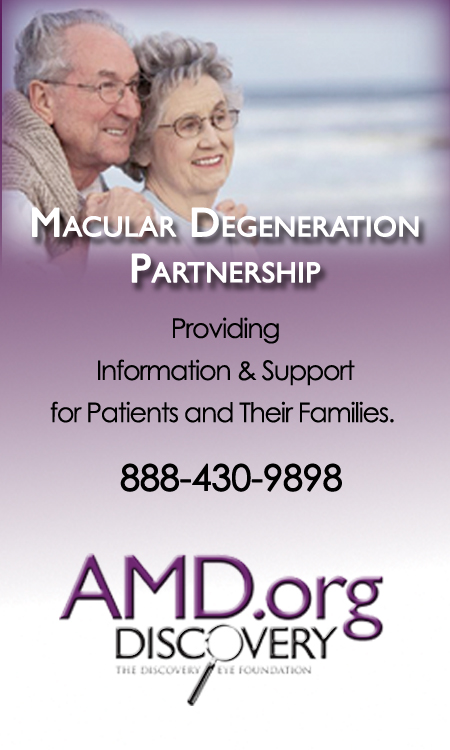 and when the company laid her off in 2003, Cole convinced them to pay for her to go back to school to earn her teaching credential. “It was the only thing I could come up with to do at my age,” she says. She earned the credential at age 70 and was a substitute teacher until her retirement in 2008.
and when the company laid her off in 2003, Cole convinced them to pay for her to go back to school to earn her teaching credential. “It was the only thing I could come up with to do at my age,” she says. She earned the credential at age 70 and was a substitute teacher until her retirement in 2008.
When her doctor diagnosed her with dry age-related macular degeneration (AMD) in 2010, she picked up a card in his office that advertised The Discovery Eye Foundation’s Vision Symposium at UC Irvine. She attended the half-day event, and she’s been “obsessed with DEF ever since. There were great speakers, and it gave me the opportunity to mingle with people at all stages of AMD,” she says, adding that she regularly attends events through DEF and the Macular Degeneration Partnership (MDP), relying on the MDP website as her primary source of AMD information.
Cole says she has yet to experience any real effects of AMD: “I’m too young for that!” she insists. “My doctor just checked me and said the same thing he says every year: ‘See you in a year’; he told me I only need to come in sooner if I notice a change in my eyesight.”
Thanks to MDP, Cole believes she is better prepared to deal with the effects of AMD when they do happen. “Knowing that support is there makes it OK,” she says. “No matter what happens, I know DEF and the Macular Degeneration Partnership are there for me.”
The California native takes an eye vitamin and mineral supplement, and she added salmon and tuna to her vegetarian diet because of their eye-healthy properties. “To me, it’s just a matter of being healthy,” Cole says. “I’m very healthy. I don’t like taking drugs — not even aspirin — but I do make sure to eat chocolate at both lunch and dinner.”
Additionally, she tries to go walking at least two or three times a week, though, recently, she laments, “I accidentally signed up for three days of classes every week this quarter, which is interfering with my walking.”
Photophobia
11.4.14
Photophobia is a severe sensitivity to bright light which can result in discomfort and even pain. It can vary from person to person with discomfort coming from lights that don’t ordinarily affect others, including natural outdoor light, overhead lighting (such as fluorescent light), reflected light or flames of a fire.
Although in most cases photophobia is harmless, it is NOT an eye disease, but may be a symptom of an underlying problem. These could include an infection or abrasion that irritates the eye, a viral illness, medications, severe headache or migraine. 
It could also be the result of your unique physical makeup. A person’s eye color can also affect ones sensitivity to light. People with lighter colored eyes can be more sensitive to light as opposed to people with darker eyes. An examination by an eye doctor can help determine the cause of your sensitivity.
The best treatment option for relieving the discomfort of photophobia is to address the underlying cause. The answer may be as simple as changing a medication or treating a corneal abrasion. Or your photophobia could be the clue that alerts doctors to another treatable condition. If you are naturally sensitive to light, wearing sunglasses with UV protection, brimmed hats or avoiding bright light situations are the only alternatives. In most cases, if you treat the underlying cause, the sensitivity will decrease or disappear.
20 Tips For Cooking With Low Vision
10/21/14
People cook for different reasons. Some just so they can eat, others enjoy the creativity and find it relaxing and for some it is a activity they have fun doing with others. But cooking can become difficult and dangerous as you lose your vision. Here are some useful tips to help keep you safe and give you confidence to enjoy cooking with low vision.

1. To avoid burns, place a pot or pan on the burner before turning it on and, turn the burner off before removing the pot or pan.
2. Turn pan handles inward from the stove or counter to avoid spills and burns.
3. Mark common or often used settings on appliances with bright nail polish, bright colored tape, or raised dots.
4. Purchase a microwave with a sensor reheat feature to automatically reheat food to the proper temperature.
5. Use long oven mitts to protect your hands and arms from hot surfaces.
6. Turn on the oven light while using it to remind you the oven is on.
7. Use a double spatula to help avoid spills when turning food.
8. Use a special measuring cup that enhances contrast.
9. Use a knife with an adjustable slicing guide.
10. Have light and dark cutting boards to be able to provide the most contrast depending on what you are slicing or chopping – such as black for slicing onions and white for chopping kale.
11. Use a large print, low-vision kitchen timer.
12. Use an automated coffee maker that makes a single cup of coffee or tea to eliminate the need to pour boiling liquids and risk burns.
13. Attach low-glare fluorescent lighting to the underside of cabinets to make it easier to see.
14. Outline the end of countertops with colored duct tape, or paint in a color that contrasts with the work surface. Also choose kitchenware that contrast with the countertop.
15. Organize shelves in a logical way, possibly alphabetically, with most use items easily accessible. Be sure to return items to where they were originally.
16. Use a color for the interior of cupboards that contrasts with your dishes to make them easier to see. Do not use clear glasses or dishes as they appear invisible.
17. If you have glaucoma and experience tunnel vision, remove cabinet doors or replace with sliding doors.
18. Place rubber bands around the milk carton to distinguish it from the orange juice carton. This also works well with distinguishing a can of chicken noodle soup from tomato, etc.
19. Avoid overflows by hooking a “liquid Level” indicator to your glass or cup that will play a tune when you are ¾” from the top.
20. For cold drinks you can also use your finger by placing the tip of it over the edge of the glass and stop pouring when you feel the liquid.
Once you have prepared your food, eating can also be a challenge, so here are five bonus tips.
1. Use dinner plates with a raised lip to avoid spills or pushing the food off while eating.
2. Avoid patterns on dinnerware.
3. Make sure your dishes contrast with the table or table linens.
4. Have a system for putting food on your plate such as meat at 6:00, vegetables at 3:00 and starches at 9:00.
5. Use a gooseneck lamp directly over you plate.
Being A Blind Artist
10/14/14
One thing that was always nurtured in me as a child was art. My father was an architect, and my mother is an art-lover. I remember they would collect all my artwork from preschool and elementary school. I used to have trouble sleeping as a kid, so I started drawing on the wall next to my bed; it would comfort me until I fell asleep. Most parents would probably scold a kid for drawing on the wall, but my parents loved it! In fact, my father would bring his architect friends into the room to “see my daughter’s mural.” Art has always been one area where I don’t feel inadequate. Art is so subjective, and anything can be art, so there is no judgment, and it’s very liberating. I’ve done abstract painting, mosaic tile work, ceramics and, currently, sculpture.
Becoming a Blind Artist
When I became blind, maybe five or six years in, I started going to Braille Institute, and I rediscovered art as a blind person. I saw people there creating art, and I thought, “This is amazing.”

I always wanted to learn how to sculpt, but every time I called art schools about classes, when I told them I’m blind, they told me I had to take private lessons. Fear came up, and they did not know where to put me. Finally, two years ago, I started taking private lessons. My first piece was a portrait of a man, and the school was so amazed, they not only offered to put me in the sculpting class, but they gave me a full scholarship.
My private-lesson teacher wasn’t even a sculptor; she was a painter, but she was so tickled by the idea of a blind person wanting to sculpt that she wanted to be involved. She was a true artist and wanted to try something new. It was a wonderful experience for both of us. My second teacher would blindfold herself to figure out how to teach me. She really went out of her way, and I learned some really great techniques. I started my current class, which is a figure-sculpting class, by sculpting shoes — I have a shoe fetish — but I starting getting jealous of everyone else sculpting figures. I can’t touch the naked models, so now I touch other people’s sculptures and use that as a study to make my own.
I love it. I love the feel of clay. I’m a very tactile person, and I love the sensation of it in my hands. It’s so malleable. I use my hands more than sighted people; I don’t really use tools. I need to feel the clay to shape it, and I think there’s more emotion involved for me. It’s me, the piece and nothing else. Maybe it’s because I can’t see it — it’s like a meditation for me. I get lost in my piece. There is so much emotion — that’s where I get my inspiration. It’s a way to fantasize or fulfill an emotion or need. For me, it’s more about the process — I don’t see the finished product. It’s a very fulfilling way of expressing myself that words can’t; it’s more about expressing what I feel.
Lens Care If You Wear Contact Lenses and Use Cosmetics
9/23/14
In a continuation from his article on Proper Contact Lens Care, Mr. Ward, Director of the Emory Contact Lens Service, also offers tips if you wear contact lenses and use cosmetics. Several of these pointers apply even if you don’t wear contact lenses, but want to protect your eyes.
The Bullet List of Contact Lens Care For Users Of Eye Area Cosmetics
- If possible look for eye makeup specifically labeled for use by contact lens wearers; use premium products.
- Apply eye area cosmetics after inserting contact lenses (this will help prevent cosmetic contamination of lens surfaces from handling of cosmetics).
- Remove lenses before removing makeup.
- Remove makeup daily with mild soap and water; do not use oil or petroleum based make up removers; specifically, avoid moisturizing bar soap and an eye makeup remover that contains mineral oil and cocoa butter.
- Choose water based makeup; avoid any oil based, or ‘waterproof’ eye area products (oils will travel across the skin and contaminate the tear film).
- Avoid ‘lash-extending’ mascaras with artificial fibers, and apply mascara only to the end of lashes; do not apply mascara to the base of the eyelash or on the eyelid margin.
- Do not apply oil-based moisturizers on the eyelids (oils can spread on the skin).
- Do not apply any makeup to the eyelid margin (shelf), between the eyelashes and the eyeball.
- Apply face powders sparingly; use pressed powder instead of loose powder; try to stay away from the eye area as much as possible; avoid frosted.
- Choose liquid or gel eye shadows rather than powders.
- Use caution with hair styling sprays. If possible, spray aerosols with eyes closed and step back out of the mist before opening the eyes. These gel/wax/lacquer type sprays can significantly coat your contact lenses.
- Replace eye makeup at least every three months; do not share cosmetics.
- And, please note that an automobile’s rear view mirror is not intended for makeup application while driving.
 Michael A. Ward, MMSc, FAAO
Michael A. Ward, MMSc, FAAO
Director, Emory Contact Lens Service
Emory University School of Medicine
Proper Contact Lens Care Provides Best Vision, Comfort and Ocular Health
9/18/14
Proper contact lens care is essential for the best contact lens wearing experience. Mr. Ward, Director of the Emory Contact Lens Service has shared some valuable information about taking care of your contact lens in the article below. On Tuesday join us for additional tips for people who wear contact lenses and wear cosmetics.
Contact lenses provide alternatives to spectacles, and contact lens wearers report better peripheral vision, depth perception and overall vision quality. Contact lenses can correct near-sightedness, far-sightedness, astigmatism and even correct the need for reading glasses. They are also used to manage some ocular surface diseases.
Contact lenses fall into two basic material types: soft contact lenses (SCL) and rigid gas-permeable (GP) lenses. Soft lenses account for the great majority of the contact lens market. GP lenses require more precise fitting and are often used as specialty devices to correct high prescriptions and/or to manage various ocular disorders and may require longer lens-adaptation time. Regardless of lens type, careful attention to lens care instructions can provide good vision and life-long lens wearing comfort.
Proper lens care depends on the lens type, wearing schedule and other factors. Single-use or daily-disposable soft lenses are prescribed to be worn once and discarded. This is theoretically the safest lens wearing modality in that no lens cleaning, lens care or storage case is required for this modality. Other daily wear soft lenses may be replaced every 2 weeks, monthly or by other schedule. Any and all lenses that are removed each day must be cleaned and disinfected prior to their reuse. Your eye care practitioner should provide specific instructions relative to your lens wear and care needs. General lens care instructions and Dos and Don’ts are bullet-listed below.
A word of caution –
Contact lens wear is quite safe as long as proper lens and storage case care are followed. However, improper lens wear and care can put the lens wearer at risk for serious consequences. Sight-threatening microbial keratitis (corneal ulcer) is the most significant adverse event associated with contact lens wear and is largely preventable. The contact lens storage case is the most likely potential reservoir for contact lens related ocular infections. Therefore, lens storage case care should be high on the list of important lens wearing instructions. Contact lens cases are not meant to be family heirlooms; cases should be replaced regularly, at least every 1-3 months.
The Bullet List of Contact Lens Care Recommendations
- Hand washing: Always wash your hands before handling contact lenses. Use mild, basic soap and avoid antibacterial, deodorant, fragranced or moisturizing liquid soaps (many liquid soaps have moisturizers that can contaminate your contacts from handling).
- Cleaning, rinsing, and disinfecting: Digital cleaning (rubbing the lens with your finger in your palm) removes dirt and debris and prepares the lens surfaces for disinfection. Rub & rinse thoroughly, even if the product is labeled “No Rub”. Lens storage solutions contain chemicals that inhibit or kill potentially dangerous microorganisms while the lenses are soaked overnight.
- Contact lenses should be cleaned when removed from the eye.
- Do not re-use old solution or “top-off” the liquid in the lens storage case. Empty the storage case daily and always use fresh solution.
- Do not use lens care products beyond their expiration dates. Discard opened bottles after 28 days.
- Do not allow the tip of the solution bottle to come in contact with any surface, and keep the bottle tightly closed when not in use.
- Do not transfer contact lens solution into smaller travel-size containers.
- Keep your contact lens storage case clean (inside and out).
- All lens storage cases should be emptied, rinsed, wiped, and air-dried between uses.
- Keep the contact lens case clean and replace it regularly, every one to three months.
- Do not use cracked or damaged lens storage cases.
- Take care to remove residual solution from surfaces of lens case and solution bottles.
Other Dos and Don’ts
- Do not wear your lenses during water activities (swimming, hot tubs, showering, etc).
- Soft contact lenses should not be rinsed with or stored in water. Soft lenses will change size and shape if exposed to water.
- Do not put your lenses in your mouth.
- Do not use saline solution or re-wetting drops in an attempt to disinfect lenses. Neither is capable of disinfecting contact lenses.
- Wear and replace contact lenses according to the prescribed schedule.
- Follow the specific contact lens cleaning and storage guidelines from your eye care professional.
- Do not change lens care products without first checking with your eye care practitioner.
- Spare rigid (GP) lenses should be stored dry for long term storage { clean, rinse, dry}. New or dry-stored GP lenses should be re-cleaned and disinfected prior to lens wear.
- Do not store soft lenses in the storage case for an extended period of time. “Spare” soft contact lenses should be new and stored in their original and unopened packaging.
- Do not sleep in your contact lenses unless specifically approved to do so by your eye care practitioner.
For information from the Centers for Disease Control and Prevention, see:
www.cdc.gov/contactlenses/
www.cdc.gov/contactlenses/cdc-at-work.html
 Michael A. Ward, MMSc, FAAO
Michael A. Ward, MMSc, FAAO
Director, Emory Contact Lens Service
Emory University School of Medicine
How To Choose A Home Care Agency
7/31/14
When life changes due to vision loss, illness, accident or aging, it can be difficult to maintain your independence and personal care as you once did. Help with errands, grocery shopping, doctor’s appointments, personal care, medication reminders, meal preparation, laundry, housekeeping and more can relieve much of the stress you and your loved ones may be experiencing. Care provided by a qualified, professional home care agency can be the best option for many individuals and their families.
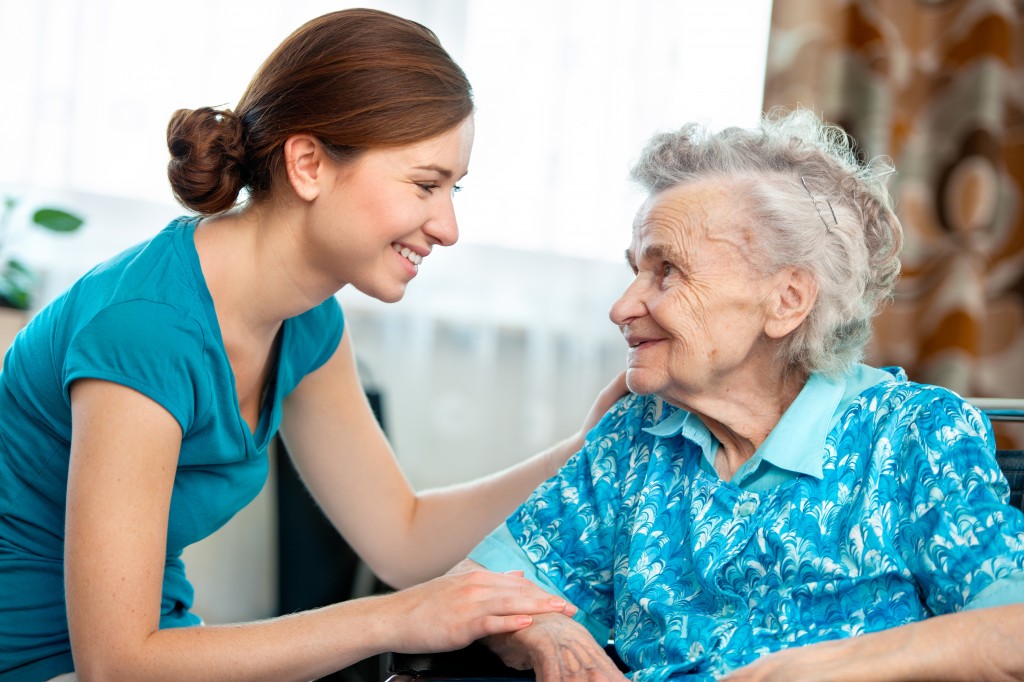
But with so many aspects to consider, the task of selecting an agency to bring into your home can be daunting. So what should you look for and what questions should you ask when selecting a home care agency to provide services to you or your family?
Qualifications
- Is the agency licensed by the state? Most states — but not all — require agencies to be licensed and reviewed regularly. Reviews may be available on request through your state health department. If your state is a non-licensure state (such as California), you will need to be more vigilant in screening potential agencies.
- Does the agency meet federal requirements for health and safety with such things as OSHA, HIPAA, infection control, a disaster plan? If not, ask why.
- What type of employee screening is done? To ensure caregivers are reliable and honest, drug and alcohol tests, extensive background checks, should be performed on all new hires and we are insured and bonded.
- Are the caregivers experienced? The very best agencies hire experienced caregiver or have a Personal Care training program written by a Registered Nurse with extensive experience in home care and education.
- Do the caregivers receive health, skill and competency testing? A good home care agency will test employees to assure their personal health, skills and capability. Standard testing should include competency testing, TB tests, pre-employment health screening and skills competency testing, and drug testing.
Quality of care
- Does the agency value a caregiver bond? A great caregiver becomes part of the family, and a good company will recognize that and try to match you with one or more caregivers with a regular schedule to promote the development of this bond.
- Does the agency provide training and continuing education? A quality home care company will provide an opportunity for continuing Personal Care training as well as specialized training in specialized areas such as dementia and Alzheimer care, chronic and acute illnesses, and best practices and procedures.
- Is there supervision and unscheduled visits by the agency’s supervisor to evaluate the quality of home care? A good home care agency will provide supervisors or care coordinators who perform unscheduled supervision visits to help make sure that you are receiving the best care possible. The field nurse supervisor visit is also a good time to communicate any concerns you may find uncomfortable discussing with your caregiver.
- As part of the agency’s quality assessment, do they have a client satisfaction survey system? For peace of mind you need an agency that has a process to know you are satisfied and keeps you and your family informed. Some agencies work with a third party to make calls to ensure your satisfaction with our caregivers and our agency. Caregivers should also be trained to alert family members regarding any changes or concerns regarding the client, in addition to responding to clients’ or family members’ concerns.
- What happens if my caregiver does not show up? One of the most common problems that people have with the average home care agency is that the caregivers don’t show up. Choose an agency that has a system to handle the caregivers who cannot fill their shift such as incentives and/or pay bonuses for perfect attendance and have “on-call” caregivers.
Costs
- How does the agency handle expenses and billing? Ask for literature explaining all services and fees, as well as detailed explanations of all the costs associated with home care.
- Will agency fees be covered by health insurance or Medicare? Find out what arrangements are in place for specific health insurance plans. Although home care agencies do not bill Medicare there are many other insurances that will pay for service such as the Veteran’s Aid and Attendance, Long-term care insurance, Work Comp insurance and some traditional plans.
Understanding services
- Will you receive a written care plan before service begins? The care plan should include details about medical equipment and specific care needs, contain input from your or your loved one’s doctor, and be updated frequently.
- Will you receive a list of the rights and responsibilities of all parties involved? This is sometimes known as a client or patient’s bill of rights.
- Will the agency work directly with you or your loved one, family members and health care providers? Look for a company that will coordinate your care with everyone involved.
- When will service be provided? Is care available round-the-clock, if necessary? Care is provided to you as planned during your initial in-home visit from our Care Coordinator. The agency should be able to provide for 24 hour care either by shifts or a live in situation, if the setting is right.
- What procedures are in place for emergencies? Ask how the agency or home health aide will deliver services in the event of a power failure or natural disaster. Your agency and caregivers should be prepared for emergencies and practice in ensure your and their safety.
- How are problems addressed and resolved? Who can you or another family member contact with requests, questions or complaints? Ensure the agency provides you with contact information and that their phones are answered 24 hours every day!
- When can services begin? A quality agency should work with you to create a schedule which will fit your needs and can be flexed if your family is in town or you go on vacation.
Monitor your home care services
After you’ve found a home care services provider, monitor the situation. If you’re concerned about the care or services provided, discuss it promptly with the agency. If necessary, involve your doctor or your loved one’s doctor as well.
 Robert Mahoney
Robert Mahoney
Owner
First Light Home Care

